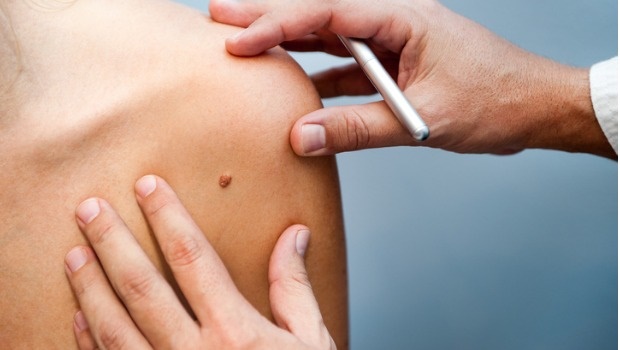
For thousands of years, humans have read meaning into moles. In ancient China and Greece, fortune-tellers divined futures by reading birthmarks. (One on your forehead? You’re a power player! Is it on the back of your neck? Oh, sorry, you’re going to be beheaded.)
In seventeenth-century England and France, women fashioned faux moles from taffeta or leather. On the other side of the Atlantic, Salem witch hunters decreed that moles were the work of the devil. (Clearly, it was preferable to be a Frenchwoman in those days.)
As divisive as moles have been, they’re far from exceptional. Nearly every adult has some. They’re more common among fair-skinned folks, but they pop up on all complexions. When we’re born, they’re microscopic, and they begin to grow during childhood. That’s usually when people start to disagree on what, exactly, to make of them.
READ MORE: 8 nipple symptoms that are totally normal
Their admirers refer to them as beauty marks, even accentuating or painting them. Meanwhile, detractors buy extra-strength concealer and search the internet in private browsing mode for home-removal tips.
Now, as we move away from a one-size-fits-all definition of beauty, there are encouraging signs that moles are getting their due. Whenever a magazine cover or an ad campaign digitally erases the smattering of moles on uber-model Gigi Hadid’s (enviably defined) abs, for example, her fans unleash a tweet-storm in praise of her unretouched beauty.
“Moles make us unique. We all have them — just in different places,” says dermatologist and psychiatrist Dr Amy Wechsler. Here’s to their randomness, their quirks and their character-giving superpowers.
READ MORE: Here’s when you should get tested for these 5 types of cancer
Identity crisis
“Not every brown spot is a mole,” says dermatologist Dr Ellen Marmur. So how can you tell what kind of mark is on your skin? Technically speaking, moles are called nevi and can be flat, raised, flesh-colored, brown or black. On a microscopic level, they’re a tight cluster of melanocytes, the body’s pigment-making cells.
Freckles, too, are groupings of melanocytes, but “freckles often tend to come and go with sun exposure,” says dermatologist Dr Naissan Wesley. “Moles grow deeper in the skin. They come — and they stay.”
And then there’s seborrheic keratosis, an age-related brown or grey growth commonly mistaken for a mole. These growths are benign and frequently removed for cosmetic reasons, but still, Marmur advises having any new moles or other spots examined. “I’ve taken off a few that mimicked early seborrheic keratosis but later turned out to be thin melanomas.
READ MORE: Christina Aguilera’s ‘makeunder’ is the best thing we’ve seen all day
Handle with care
Most people sport at least a few normal moles (even-coloured, round or oval and small). Simply having them doesn’t make you more prone to skin cancer. But if you’ve got more than five of the dysplastic — or irregular — kind, your risk of developing melanoma, the deadliest form of skin cancer, increases tenfold.
No matter your situation, though, your best defense is a good offense: wearing broad-spectrum sunscreen (with an SPF of at least 30) daily. On days you’ll be outdoors, re-apply every hour; when you’re stuck in an office, Wechsler says it’s okay to apply sunscreen only when you’re headed outside.
READ MORE: 4 awkward boob questions you actually need answered ASAP
Shade shift
Healthy moles don’t change their hue, with one exception. “During pregnancy, when oestrogen levels are high for a prolonged period of time, your existing moles can get darker,” says Wechsler. That’s because oestrogen increases melanin production (moles should return to baseline after you give birth). Research suggests that the synthetic version of oestrogen used in birth control pills has a similar effect, so theoretically, a contraception/self-tanner pill could exist in the distant future.
READ MORE: Why I changed my contraception to the patch
Keep watch
Everyone should have a yearly skin cancer check with their derm, but in addition, “you should definitely look at your own moles every month,” says Marmur. Just remember your ABCDEs:
Asymmetry: Healthy moles are symmetrical. Got one resembling the shape of Iceland? Get it seen ASAP.
Border: A mole’s edges should be smooth and defined, not jagged, blurry or uneven.
Colour: Most moles are a single shade of brown. A black spot, or multiple colours in one nevus, require an MD check.
Diameter: Anything larger than six millimetres (about the size of a pencil eraser) should be examined.
Elevation: Flat moles should stay flat. If one rises, see your derm.
This article was originally published on Women Health's South Africa.




 Publications
Publications
 Partners
Partners














